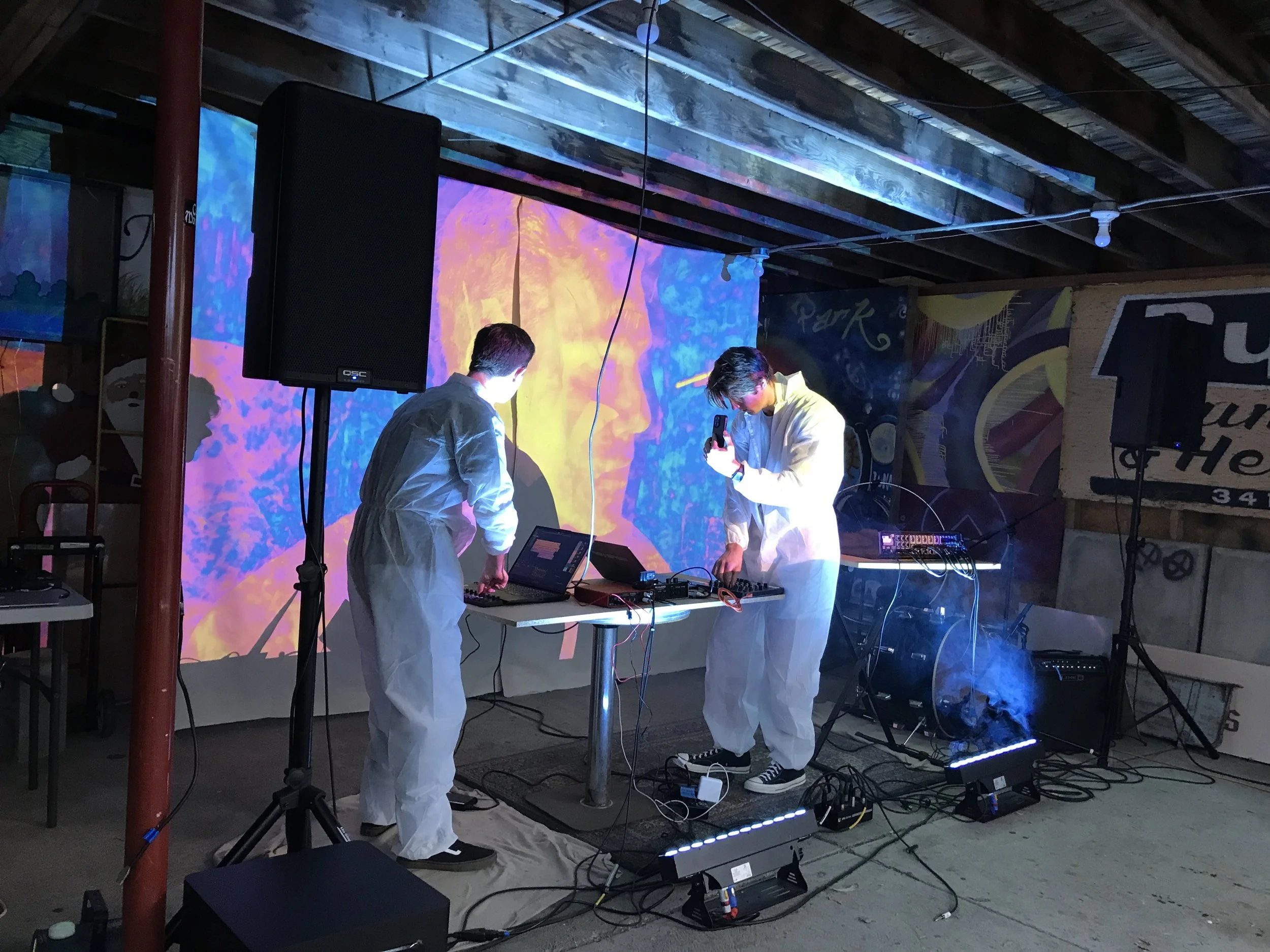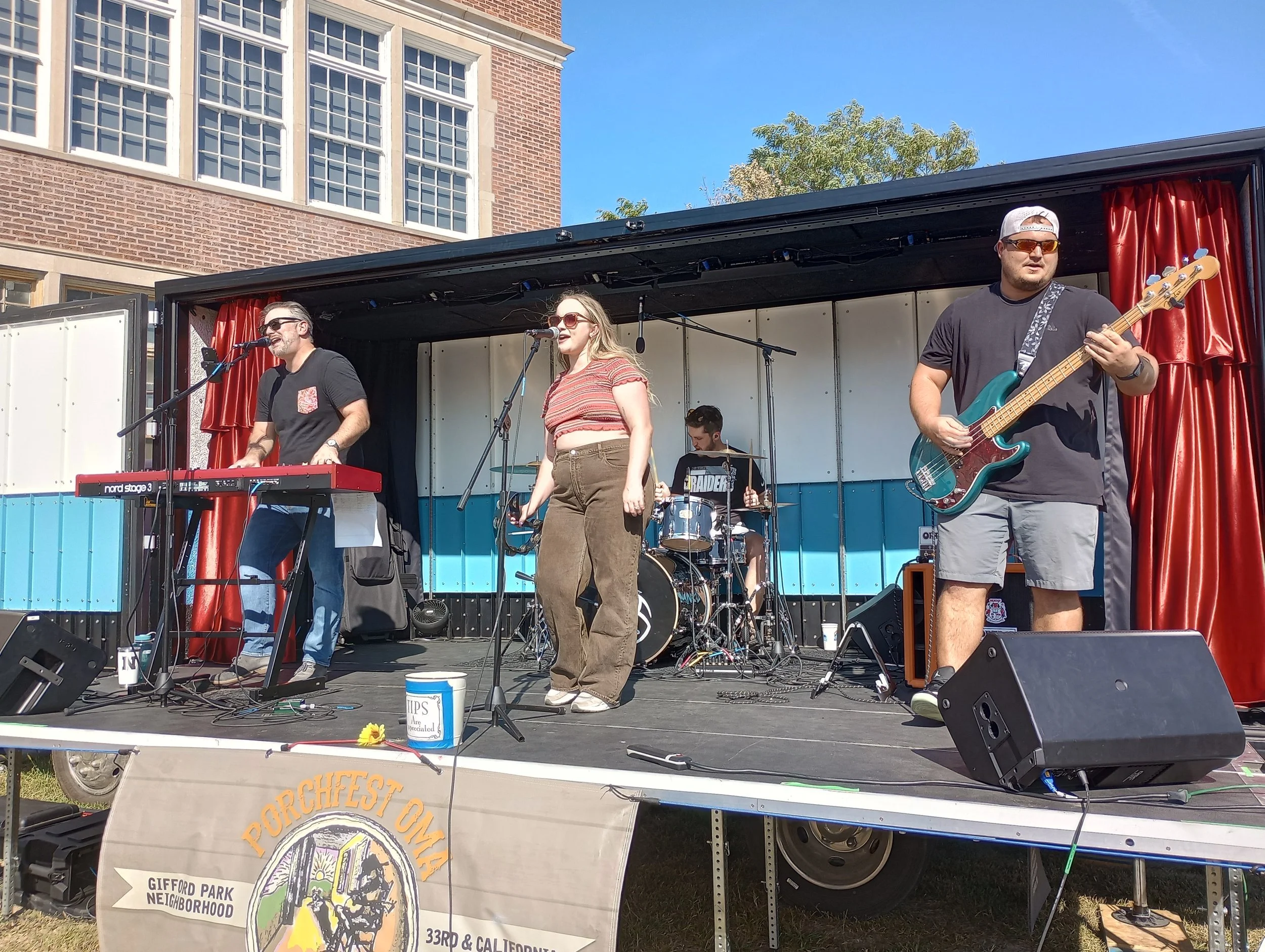Creative Placemaking Program
Omaha Mobile Stage’s Creative Placemaking Program provides resources to event organizers and artists who work on events in outdoor public spaces that are based in low-to-moderate income communities in the greater Omaha metro. We prioritize events in North and South Omaha.
Support includes:
access to the mobile venue, audio and lighting equipment, and production team (audio engineers and stagehands)
event marketing and fundraising
We aim to build the capacity of grassroots performing arts events, grow paid work for local creatives, and draw in regional tourists to Omaha's culturally rich spaces.
Since 2022, events have taken place in North Omaha's Gifford Park community, the N. 24th St. corridor and along Benson's historic main street, and in South Omaha's Vinton St. community. Prior/ongoing events include the Pull Up and Vibe Festival (2022-24), Melanin City Classics (2023), Soundspark (2024), and Noisefest (2023).
Support for this program has been made possible by Lozier Foundation, the Nebraska Arts Council, the Nebraska Cultural Endowment, Humanities Nebraska and numerous event sponsors.
To inquire about future events supported by this program, email oms@livable.org.
Placemaking Press
-
Creative Placemaking and Career Development: Omaha Mobile Stage serves as a platform for arts, connection and learning
September 15, 2023 - UNO Magazine - Read More
-
How mobile placemaking in Omaha, Nebraska is supporting the city’s Black commercial corridors
Oct. 31, 2022 – The Brookings Institution - Read more
-
Mobile Stage Seeks to be Force in Socialization, Entertainment and Community Development for Omaha Neighborhoods
October 21, 2021 – Nebraska Public Media - Read More
What is Creative Placemaking?
“Creative placemaking is when artists, arts organizations, and community development practitioners deliberately integrate arts and culture into community revitalization work—placing arts at the table with land-use, transportation, economic development, education, housing, infrastructure, and public safety strategies.”
Our Creative Placemaking goals are:
Increase vibrancy and intergenerational social connection in public space
Increase access to the live performing arts
Promote an arts-based response to public health concerns, such as loneliness and isolation
Support local performing artists and neighborhood businesses
Build social capital among designers, event organizers, performers and public space advocates
Omaha Mobile Stage operates as a mobile community venue for performing artists of all ages. By working with a diverse range of community partners—public space managers, artists, community groups, educators, and arts nonprofits—OMS events respond to the local heritage, culture and needs of Omaha's unique neighborhoods.
Arts and culture act as "civic glue" when they animate gatherings across generational, cultural and economic lines. Within our collaborative framework, the arts play a critical role in curating and strengthening neighborhood identity. OMS gathers people of all ages and backgrounds for free, family-friendly events. These gatherings can become springboards for further community and economic development activities.
About the Creative Placemaking Process
Creative placemaking is a facilitated process that starts by giving artists, creative entrepreneurs and arts and culture organizations a seat at the table. This is a simple gesture of inclusion that is often overlooked in revitalization work.
Creative placemaking produces empathy, respect, validation, social capital, innovation, new partnerships and increased funding opportunities that benefit all.
Projects facilitated with this process become magnets—gathering points for all—and springboards for further community revitalization work.
Engaging creatives at the onset allows the broader group of traditional stakeholders to learn firsthand from the experts about how to mobilize arts and cultural resources to build, heal and celebrate community.
In partnership with our community partners, Omaha Mobile Stage deploys three simple strategies to further our placemaking goals: 1. create intergenerational gatherings, 2. leverage existing anchor institutions, and 3. leverage arts audience spending.
Creating Intergenerational Gatherings
Intergenerational social engagement is a key indicator of vibrancy and social cohesion of a community. Informal mixing between age groups has a weaving effect on the social fabric.
Omaha has a unique legacy of using mobile performing arts to build social cohesion. Beginning in 1952 and lasting for 59 years, the City of Omaha Parks Department operated the Goodfellows Show Wagon as a youth talent competition. In its heyday in the 1970s, the Show Wagon drew hundreds of contestants and thousands of audience members from the Omaha area and beyond.
Among many who grew up, raised families and aged in the city during this time, it was a memorable and cherished feature of community life.
Leveraging Existing Anchor Institutions
Historic main streets, parks, gardens and schools are positioned as resources for improving public health. They are already embedded in communities and are anchors in the physical setting. They already provide accessible open and green spaces that are essential for combating isolation during a public health crisis.
Leveraging Arts Audience Spending
Omaha Mobile Stage events will create opportunities for neighborhood-based businesses, pop-up vendors and food truck operators who will benefit from event-related spending before, after and during performances.
Before the pandemic, the U.S. nonprofit arts industry generated $166 billion of economic activity each year--$63 billion in spending by arts and cultural organizations and an additional $103 billion in event-related expenditures by their audiences.
The average arts attendee spends over $30 per person, per event, beyond the cost of admission.






